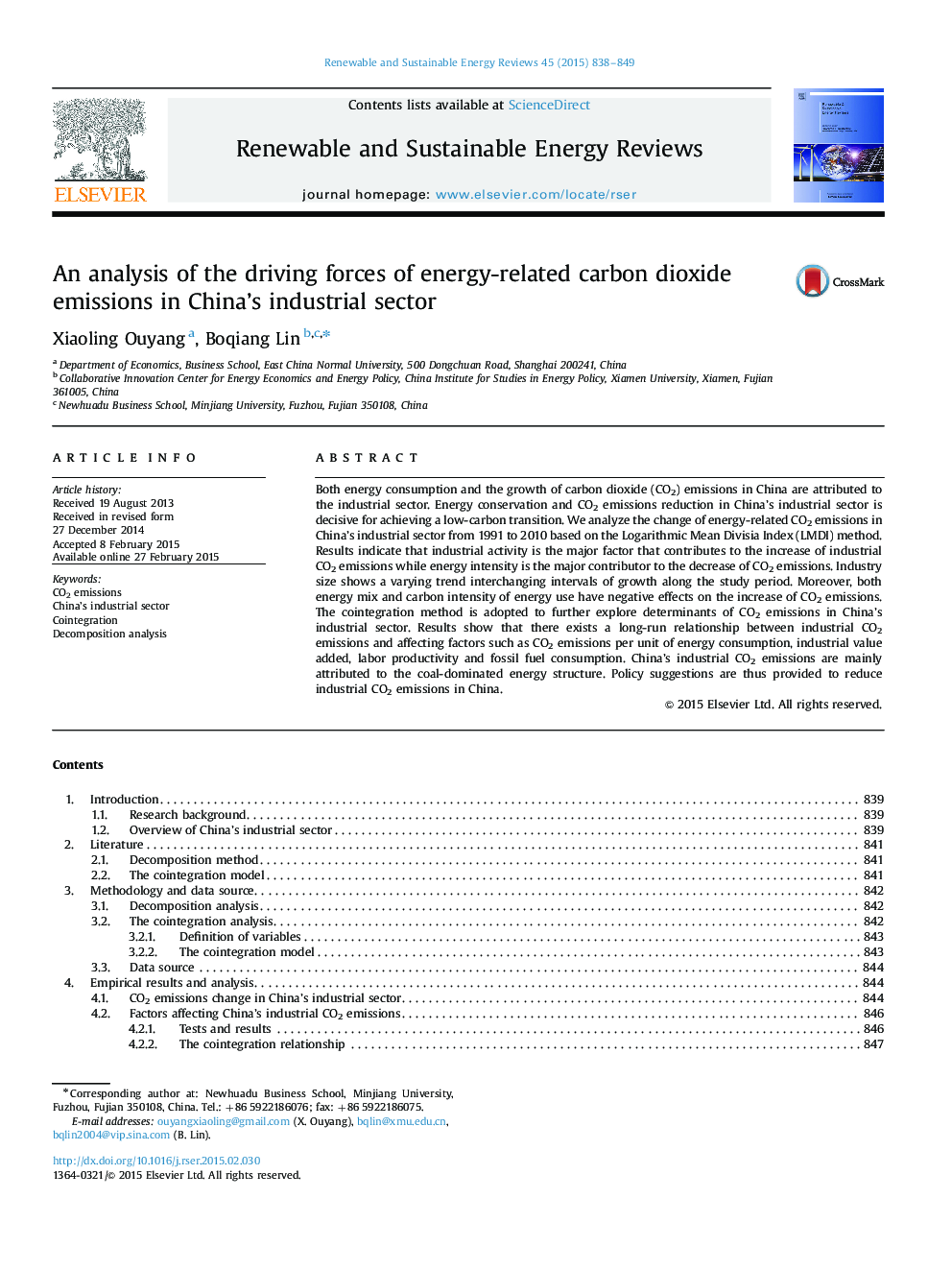| Article ID | Journal | Published Year | Pages | File Type |
|---|---|---|---|---|
| 1750088 | Renewable and Sustainable Energy Reviews | 2015 | 12 Pages |
Both energy consumption and the growth of carbon dioxide (CO2) emissions in China are attributed to the industrial sector. Energy conservation and CO2 emissions reduction in China’s industrial sector is decisive for achieving a low-carbon transition. We analyze the change of energy-related CO2 emissions in China’s industrial sector from 1991 to 2010 based on the Logarithmic Mean Divisia Index (LMDI) method. Results indicate that industrial activity is the major factor that contributes to the increase of industrial CO2 emissions while energy intensity is the major contributor to the decrease of CO2 emissions. Industry size shows a varying trend interchanging intervals of growth along the study period. Moreover, both energy mix and carbon intensity of energy use have negative effects on the increase of CO2 emissions. The cointegration method is adopted to further explore determinants of CO2 emissions in China’s industrial sector. Results show that there exists a long-run relationship between industrial CO2 emissions and affecting factors such as CO2 emissions per unit of energy consumption, industrial value added, labor productivity and fossil fuel consumption. China’s industrial CO2 emissions are mainly attributed to the coal-dominated energy structure. Policy suggestions are thus provided to reduce industrial CO2 emissions in China.
